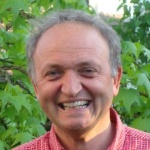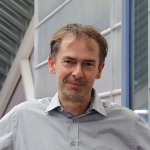Description
Coupling flow, transport, and geochemical processes in subsurface fractured media is a challenging topic for several reasons in different fields of applications.
We focus here on coupled processes related to two different fields, which we believe to have analogies in the governing processes: the first one deals with geochemical reactions in fractured geothermal systems, as we find them e.g. in chemical stimulation and reinjection operations; the second one relates to CO2 density-driven dissolution, which occurs in gas-storage fields but also in natural systems.
We plan to investigate coupled processes, where advection and diffusion coupled to geochemical reactions lead to alterations of fracture morphology, fracture aperture, and, consequently, permeability. One of the important research questions is if, for example, dissolution of rocks facilitates a self-enhancing process that leads to the development of preferential flow paths or a channeling. Pressure-driven or density-driven viscous flow competes with diffusive processes and interacts via the geochemical reactions with the hydraulic properties within the fractures. A conceptual, continuum-based model will be developed for the local scale of a fracture/fissure to study these effects.
Perspectively, it is required to identify effective processes in order to embed the insights into a multi-scale approach to address the field scales. The coupling between flow and reactions will be realized in the numerical simulator DuMux. It provides modular coupling interfaces, which can be used to develop robust and efficient coupling strategies that take into account the different time scales of flow and reactions, which may also be specific for the reaction system and dimensionless numbers like Peclet, Damköhler, Reynolds, or Rayleigh. Accordingly, we investigate both Navier-Stokes (for higher Reynolds numbers) and Darcy models. Pore-scale models or pore-network models, developed and studied in collaborating projects of the applicants, can be used to generate pore-scale data which help to obtain better parameterizations of permeability. With the help of machine learning algorithms, these findings will then be incorporated into extended parameterizations or used to further develop models in the long term that allow a comprehensive analysis of geothermal systems.
Project leader
Prof. Dr.-Ing. Rainer Helmig
apl. Prof. Dr.-Ing. Holger Class
apl.Prof. Dr.rer.nat Bernd Flemisch
Prof. Dr. Inga Berre
Eirik Keilegavlen, PhD
Researcher
Leon Keim (M.Sc.)
Duration
10/2021 - 12/2024
Project-related publications
Journal Articles
- Keim, L., & Class, H. (2025). Rayleigh Invariance Allows the Estimation of Effective CO2 Fluxes Due To Convective Dissolution Into Water-Filled Fractures. Water Resources Research, 61, Article 2. https://doi.org/10.1029/2024WR037778
- Class, H., Keim, L., Schirmer, L., Strauch, B., Wendel, K., & Zimmer, M. (2023). Seasonal Dynamics of Gaseous CO2 Concentrations in a Karst Cave Correspond with Aqueous Concentrations in a Stagnant Water Column. Geosciences, 13, 51. https://doi.org/10.3390/geosciences13020051
Datasets
- Keim, L., & Class, H. (2024). Replication Code for: Rayleigh invariance allows the estimation of effective CO2 fluxes due to convective dissolution into water-filled fractures [DaRUS]. https://doi.org/10.18419/darus-4089
- Keim, L., & Class, H. (2024). Replication Data for: Rayleigh invariance allows the estimation of effective CO2 fluxes due to convective dissolution into water-filled fractures [DaRUS]. https://doi.org/10.18419/darus-4143
- Keim, L., Class, H., Schirmer, L., Strauch, B., Wendel, K., & Zimmer, M. (2023). Code for: Seasonal Dynamics of Gaseous CO2 Concentrations in a Karst Cave Correspond With Aqueous Concentrations in a Stagnant Water Column [DaRUS]. https://doi.org/10.18419/darus-3276
- Keim, L., Class, H., Schirmer, L., Wendel, K., Strauch, B., & Zimmer, M. (2023). Data for: Measurement Campaign of Gaseous CO2 Concentrations in a Karst Cave with Aqueous Concentrations in a Stagnant Water Column 2021-2022. [DaRUS]. https://doi.org/10.18419/darus-3271
Contact

Rainer Helmig
Prof. Dr.-Ing. Dr.-Ing. h.c.Emeritus

Holger Class
apl. Prof. Dr.-Ing.Deputy Head of the Department, Professor for Fluid Dynamics

Bernd Flemisch
apl. Prof. Dr. rer. nat.Professor for Simulation Technology



